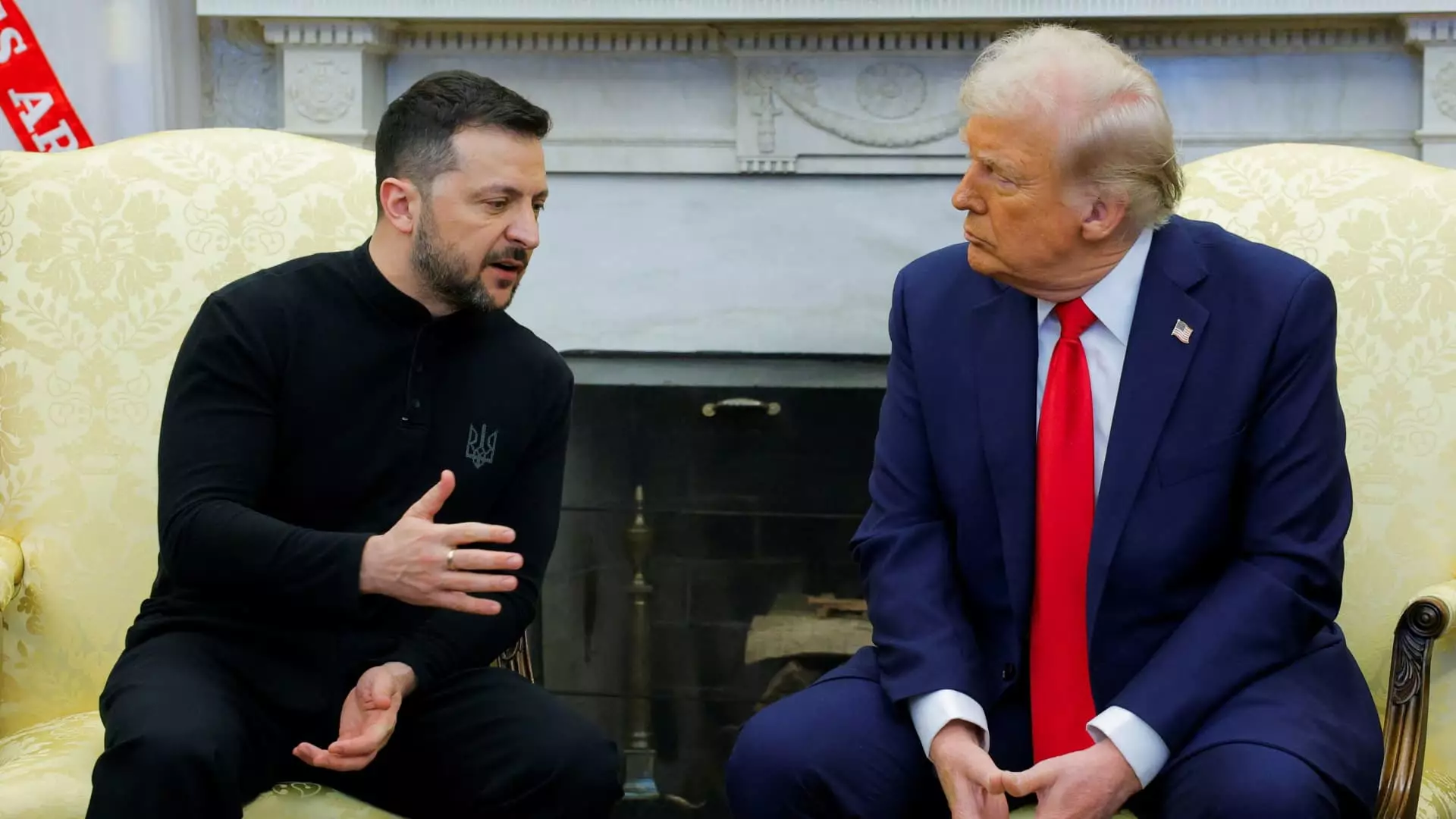The recent tête-à-tête between U.S. President Donald Trump and Ukrainian President Volodymyr Zelenskyy in St. Peter’s Basilica may be framed as a moment steeped in historical potential. However, behind the marble columns and sacred ambiance of the Vatican lies a reality rippling with dissonance. The backdrop of Pope Francis’s funeral served as a melancholic yet impactful setting for this delicate political maneuvering. The two leaders, previously embroiled in controversy, approached their negotiations at a time when the possibility of peace seems both elusive and critical. To appreciate the gravity of this moment is to recognize the dual shadows cast by their fragmented relationship and the broader geopolitical implications of a war that has ebbed and flowed for far too long.
Zelenskyy expressed optimism, framing the 15-minute conversation with Trump as historic if it yields meaningful results. But could this be mere posturing? Their interaction, stripped of aides and formalities, suggests intimacy, yet the stakes are high. When discussing the “protection of lives,” “ceasefire,” and “lasting peace,” words hang precariously in the air, indicating that both men are playing a complex game of chess, fraught with risk. The urgency of their dialogue reflects not only their respective political interests but also the palpable anxiety gripping a war-torn Ukraine.
The Dichotomy of Diplomacy: Symbolism vs. Substance
The photographs from this clandestine meeting have already circulated widely, framing an image of camaraderie that might distract from the underlying tensions of their discussions. While a White House spokesperson hailed the meeting as “very productive,” the reality lies in the facts—differences remain stark between their positions, especially concerning Crimea and sanctions against Russia. Does this meeting, symbolically charged yet pragmatically fragile, genuinely wield the power to effect change, or can it be relegated to another momentary media spectacle?
Ironically, while Zelenskyy donned a military-style jacket, aligning himself with his country’s struggle for sovereignty, Trump was responding to the growing fears amongst international observers that his administration’s dialogues have been muddied by disagreements. The contrast between the two leaders mirrors the discordance in their political styles—Zelenskyy represents resilience and unity in the face of immense adversity, while Trump’s reputation as a disruptive negotiator complicates any straightforward resolutions. The fact that both are now under pressure to demonstrate tangible progress underscores a broader institutional fragility, threatening any seeds of peace that could be planted during such high-profile engagements.
A Seamless Alliance or a Construct of Convenience?
Despite their historic difficulties, both Trump and Zelenskyy find themselves entangled in a mutual necessity. For Trump, support from Ukraine is integral in amplifying his broader narrative of achieving peace and securing his legacy as a peacemaker. Conversely, Zelenskyy’s grasp on navigating these precarious waters rests on convincing the global community that Ukraine requires a robust ally—one who may not uniformly align with ethical pursuits but has the potential to influence Russian strategy favorably. This inherent contradiction raises critical questions about the authenticity and longevity of alliances forged in the crucible of desperation.
The stark reality is that geopolitical negotiations have a chilling tendency to sideline moral imperatives in favor of expedience—what matters is not just whether an agreement is reached but the ethical underpinnings of such agreements. The proposals emerging from Washington, which suggest a legal acknowledgment of Crimea’s annexation as Russian territory, represent a slippery slope, challenging the very principles of sovereignty and justice that Zelenskyy has championed on the world stage. It becomes clear that while personal relationships may be fostered in palatial surroundings, the ramifications of their decisions echo far beyond the plush carpets of the Vatican.
The Fabric of Global Peace: A Fragile Future
Moving forward, whether this meeting becomes a catalyst for real change or merely a fleeting image of diplomatic engagement rests on the ability of both leaders to transcend their historical grievances and align themselves toward a common goal. The narratives of war and peace interweave a complex tapestry, and leaders must grapple with the implications of their choices—not simply for their nations but for the global community at large.
As Pope Francis advocated for peace throughout his papacy, appealing for negotiations to quell conflict, the question remains: Will today’s leaders heed that call, or will they allow themselves to be swallowed by the very chaos they seek to contain? The outcome of this singular meeting in the Vatican may very well determine the trajectory of international human rights and the enduring struggle for sovereignty in Ukraine. It is this duality—the promise of historical impact set against a backdrop of discomforting fragility—that renders this moment exceptionally poignant.

Leave a Reply